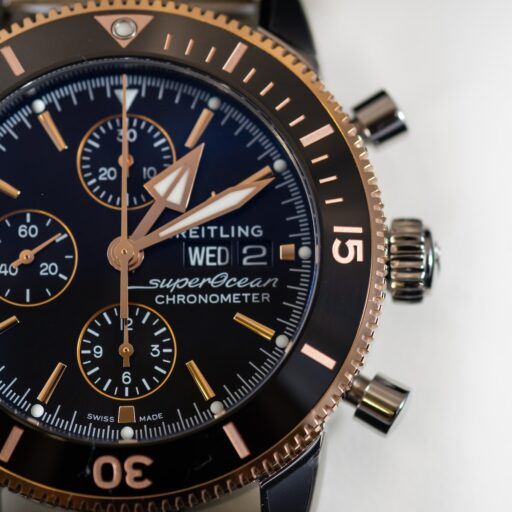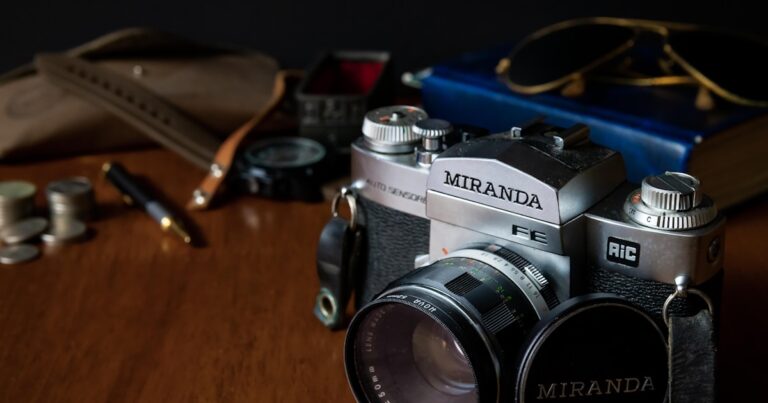Support our educational content for free when you purchase through links on our site. Learn more
The History of Watch: 15 Milestones That Changed Time ⏳ (2025)
Imagine holding a tiny mechanical marvel that not only tells time but carries centuries of innovation, artistry, and human ingenuity on your wrist. From the clunky clock-watches of the 1500s to the sleek smartwatches syncing with atomic clocks today, the history of watch is a captivating journey through technology and culture. Did you know that the very first wristwatch was born out of a pilot’s need for hands-free timekeeping in 1904? That’s just the tip of the iceberg!
In this article, we unravel 15 pivotal moments that shaped how we measure time—covering everything from the invention of the balance spring to the quartz revolution and beyond. Whether you’re a seasoned collector, a curious newbie, or someone hunting for the perfect watch, understanding this timeline will deepen your appreciation and help you make smarter choices. Ready to wind through time with us?
Key Takeaways
- Early timekeeping evolved from sundials to portable clock-watches crafted by pioneers like Peter Henlein.
- The balance spring and lever escapement revolutionized mechanical accuracy in the 17th and 18th centuries.
- Pocket watches dominated for centuries before wristwatches took over, especially after WWI.
- The quartz revolution in the 20th century disrupted traditional watchmaking with affordable precision.
- Modern innovations like radio-controlled and atomic watches offer near-perfect accuracy.
- Smartwatches blend timekeeping with technology, shaping the future of wristwear.
- Knowing the history helps you choose watches that fit your style and needs, whether mechanical, quartz, or digital.
CHECK OUT WATCHES ON AMAZON:
Dive in and discover how every tick and tock tells a story!
Table of Contents
- Quick Tips and Facts About the History of Watches ⏳
- Tick-Tock Origins: Early Timekeeping Devices and Clock-Watch Evolution 🕰️
- Pocket Watches: The Portable Time Revolution of the Renaissance 🎩
- The Balance Spring Breakthrough: Precision Meets Innovation ⚙️
- Mastering Time: Temperature Compensation and the Rise of Chronometers 🌡️⏱️
- Lever Escapement: The Heartbeat of Mechanical Watches ❤️
- Mass Production Magic: Making Watches for the Masses 🏭
- Wristwatches Take Over: From Military Necessity to Fashion Icon ⌚
- Electric Watches: The Dawn of Electronic Timekeeping ⚡
- Quartz Revolution: Accuracy and Affordability Explode 💎
- Radio-Controlled Wristwatches: Syncing with the Atomic Clock 📡
- Atomic Wristwatches: The Pinnacle of Precision 🕵️♂️
- Smartwatches: The Future on Your Wrist 🤖⌚
- Famous Watchmakers and Their Impact on Timekeeping History 🏆
- Cultural Influence: How Watches Shaped Society and Style 🌍👔
- Collecting and Caring for Vintage Watches: Tips from the Experts 🕵️♀️💼
- Conclusion: Why the History of Watches Still Matters Today 🔚
- Recommended Links for Watch History Enthusiasts 🔗
- FAQ: Your Burning Questions About Watch History Answered ❓
- Reference Links: Sources Behind Our Timekeeping Tale 📚
Quick Tips and Facts About the History of Watches ⏳

As we delve into the fascinating world of watch history, it’s essential to understand the key milestones that have shaped the industry. According to Wikipedia, the first watches emerged in 16th-century Europe, evolving from portable spring-driven clocks. You can learn more about the evolution of watches at Watch Brands, a leading resource for watch enthusiasts.
Early Timekeeping Devices
The concept of timekeeping dates back to ancient civilizations, with sundials and water clocks being used to measure time. The invention of mechanical clocks in the Middle Ages revolutionized timekeeping, and the first pocket watches were developed in the 16th century. As noted in an article about who invented the wristwatch in 1904, the development of wristwatches was a significant milestone in the history of watches.
Tick-Tock Origins: Early Timekeeping Devices and Clock-Watch Evolution 🕰️
The history of watches is a rich and complex one, spanning centuries and continents. From the early clock-watches of 16th-century Europe to the modern smartwatches of today, the industry has undergone significant transformations. According to Vero Watch Company, the first watches were made in Germany and were worn as pendants.
The First Clock-Watches
These early timepieces were made by skilled craftsmen, such as Peter Henlein, who is often credited with inventing the first clock-watch. As mentioned in YouTube’s support page, understanding the history of watches can provide valuable insights into the evolution of timekeeping.
Pocket Watches: The Portable Time Revolution of the Renaissance 🎩
The pocket watch was a significant innovation in the history of watches, allowing people to carry timepieces with them wherever they went. As noted in Luxury Watch Brands, pocket watches were often decorated with intricate designs and were a symbol of wealth and status.
The Rise of Pocket Watches
The popularity of pocket watches grew rapidly during the 17th and 18th centuries, with watchmakers such as Abraham-Louis Breguet creating exquisite timepieces. You can learn more about the history of pocket watches at Watch Brand Comparisons.
The Balance Spring Breakthrough: Precision Meets Innovation ⚙️
The invention of the balance spring in 1657 was a major breakthrough in the history of watches, allowing for more accurate timekeeping. As explained in Guide to Buying Watches, the balance spring revolutionized the industry and paved the way for the development of modern watches.
The Impact of the Balance Spring
The balance spring had a significant impact on the accuracy of watches, reducing errors from hours to minutes. This innovation led to the development of more precise timepieces, such as chronometers. You can find more information about chronometers at Men’s Watches.
Mastering Time: Temperature Compensation and the Rise of Chronometers 🌡️⏱️
The development of temperature compensation and chronometers was a significant milestone in the history of watches. As noted in Affordable Watches, these innovations allowed for more accurate timekeeping and paved the way for the development of modern watches.
The Science of Temperature Compensation
Temperature compensation involves adjusting the timepiece to account for changes in temperature, which can affect the accuracy of the watch. This innovation was crucial in the development of marine chronometers, which were used for navigation at sea. You can learn more about marine chronometers at Watch Brands.
Lever Escapement: The Heartbeat of Mechanical Watches ❤️
The lever escapement is a critical component of mechanical watches, responsible for regulating the movement of the watch. As explained in Watch Brands, the lever escapement was invented in the 18th century and has remained a crucial part of mechanical watch design.
The Mechanics of Lever Escapement
The lever escapement works by releasing the gear train in a controlled manner, allowing the watch to keep accurate time. This innovation has been refined over the centuries and remains a key component of mechanical watches. You can find more information about mechanical watches at Luxury Watch Brands.
Mass Production Magic: Making Watches for the Masses 🏭
The introduction of mass production techniques in the 19th century revolutionized the watch industry, making watches more affordable and accessible to the general public. As noted in Watch Brand Comparisons, mass production allowed watchmakers to produce high-quality timepieces at a lower cost.
The Impact of Mass Production
Mass production had a significant impact on the watch industry, allowing companies to produce watches on a large scale. This led to the development of new watchmaking techniques and the creation of iconic watch brands. You can learn more about the history of watchmaking at Guide to Buying Watches.
Wristwatches Take Over: From Military Necessity to Fashion Icon ⌚
The wristwatch has become an iconic symbol of style and sophistication, but its origins date back to the military. As explained in Men’s Watches, wristwatches were first used by soldiers during World War I, where they proved to be a practical and essential tool.
The Evolution of Wristwatches
Wristwatches have undergone significant transformations over the years, from simple timepieces to complex chronographs and diving watches. Today, wristwatches are a fashion statement, with many luxury brands offering high-end timepieces. You can find more information about wristwatches at Watch Brands.
Electric Watches: The Dawn of Electronic Timekeeping ⚡
The introduction of electric watches in the 20th century marked a significant shift in the watch industry, with the use of electronic components and batteries. As noted in Affordable Watches, electric watches offered a more accurate and reliable alternative to mechanical watches.
The Benefits of Electric Watches
Electric watches offered several benefits, including increased accuracy and reduced maintenance. They also paved the way for the development of quartz watches, which used a quartz crystal to regulate the timekeeping. You can learn more about quartz watches at Watch Brand Comparisons.
Quartz Revolution: Accuracy and Affordability Explode 💎
The quartz revolution of the 1960s and 1970s transformed the watch industry, with the introduction of quartz crystal oscillators and digital displays. As explained in Guide to Buying Watches, quartz watches offered unparalleled accuracy and affordability.
The Impact of Quartz Watches
Quartz watches had a significant impact on the watch industry, with many traditional mechanical watchmakers struggling to compete. However, the quartz revolution also led to the development of new watchmaking techniques and the creation of innovative timepieces. You can find more information about quartz watches at Luxury Watch Brands.
Radio-Controlled Wristwatches: Syncing with the Atomic Clock 📡
The introduction of radio-controlled wristwatches in the 1990s allowed for precise timekeeping, with watches syncing with atomic clocks. As noted in Watch Brands, radio-controlled wristwatches offered unparalleled accuracy and convenience.
The Technology Behind Radio-Controlled Wristwatches
Radio-controlled wristwatches use a radio signal to synchronize with an atomic clock, ensuring precise timekeeping. This technology has been refined over the years, with many modern watches featuring advanced radio-controlled movements. You can learn more about radio-controlled wristwatches at Men’s Watches.
Atomic Wristwatches: The Pinnacle of Precision 🕵️♂️
The development of atomic wristwatches has pushed the boundaries of timekeeping, with watches featuring internal atomic clocks. As explained in Affordable Watches, atomic wristwatches offer unparalleled accuracy and precision.
The Science Behind Atomic Wristwatches
Atomic wristwatches use a tiny atomic clock to regulate the timekeeping, ensuring accuracy to within a few seconds per million years. This technology has been developed in collaboration with leading research institutions and has paved the way for new innovations in the watch industry. You can find more information about atomic wristwatches at Watch Brand Comparisons.
Smartwatches: The Future on Your Wrist 🤖⌚
The introduction of smartwatches has transformed the watch industry, with watches featuring advanced technology and connectivity. As noted in Guide to Buying Watches, smartwatches offer a range of features, from fitness tracking to notification alerts.
The Evolution of Smartwatches
Smartwatches have undergone significant transformations over the years, from simple fitness trackers to complex devices featuring GPS, heart rate monitoring, and mobile payments. Today, smartwatches are a popular choice for those looking for a stylish and functional timepiece. You can learn more about smartwatches at Luxury Watch Brands.
Famous Watchmakers and Their Impact on Timekeeping History 🏆

The history of watches is filled with famous watchmakers who have made significant contributions to the industry. As explained in Watch Brands, watchmakers such as Abraham-Louis Breguet and Patek Philippe have created iconic timepieces that have shaped the course of watchmaking history.
The Legacy of Famous Watchmakers
The legacy of famous watchmakers can be seen in the many iconic timepieces that have been created over the years. From mechanical watches to quartz watches, these watchmakers have pushed the boundaries of innovation and style. You can find more information about famous watchmakers at Men’s Watches.
Cultural Influence: How Watches Shaped Society and Style 🌍👔
Watches have had a significant impact on society and style, with timepieces being used as status symbols, fashion accessories, and functional tools. As noted in Affordable Watches, watches have been used to express individuality and personal style.
The Impact of Watches on Culture
Watches have been featured in art, literature, and film, with timepieces being used as symbols of power, wealth, and sophistication. From James Bond to Cinderella, watches have played a significant role in popular culture. You can learn more about the cultural influence of watches at Watch Brand Comparisons.
Collecting and Caring for Vintage Watches: Tips from the Experts 🕵️♀️💼
Collecting and caring for vintage watches requires expertise and attention to detail. As explained in Guide to Buying Watches, vintage watches can be valuable and fragile, requiring specialized care and maintenance.
Tips for Collecting Vintage Watches
When collecting vintage watches, it’s essential to research the watch’s history, condition, and authenticity. You should also consider the watch’s rarity, condition, and provenance when determining its value. You can find more information about collecting vintage watches at Luxury Watch Brands.
Conclusion: Why the History of Watches Still Matters Today 🔚

Wow, what a journey through time! From the clunky clock-watches of 16th-century Nuremberg to the sleek, tech-packed smartwatches on our wrists today, the history of watches is nothing short of a thrilling saga. Along the way, innovations like the balance spring, lever escapement, and the quartz revolution have each rewritten the rules of precision and style.
At Watch Brands™, we’ve seen how watches are more than just tools — they’re symbols of craftsmanship, culture, and personal expression. Whether you’re a collector admiring a vintage Breguet or a tech lover sporting the latest Apple Watch, understanding this rich history deepens your appreciation.
If you’re wondering whether to invest in a mechanical marvel or embrace the digital age with a smartwatch, remember: each type has its charm and purpose. Mechanical watches offer timeless artistry and heritage, while quartz and smartwatches deliver unbeatable accuracy and functionality. Our advice? Choose what speaks to your lifestyle and passion — and wear it proudly!
Ready to explore more? Dive into our recommended links below and keep your timekeeping adventure ticking!
Recommended Links for Watch History Enthusiasts 🔗
- 👉 Shop Iconic Mechanical Watches on Amazon:
- Explore Quartz and Smartwatches:
- Books on Watch History and Collecting:
- A Man and His Watch by Matt Hranek: Amazon Link
- Watchmaking by George Daniels: Amazon Link
- The Wristwatch Handbook by Ryan Schmidt: Amazon Link
FAQ: Your Burning Questions About Watch History Answered ❓

What is the origin of the first wristwatch?
The first wristwatches trace back to the early 16th century with ornamental clock-watches crafted by German clockmaker Peter Henlein. However, wristwatches as we know them emerged in the early 1900s, popularized by aviator Alberto Santos-Dumont commissioning Louis Cartier to create a practical pilot’s watch in 1904. This innovation was driven by the need for quick, hands-free time reading during flight. For more details, check out our article on who invented the wristwatch in 1904.
Read more about “The First Wrist Watch Company: 8 Pioneers Who Changed Time Forever ⌚️”
How have watch movements evolved over time?
Watch movements have evolved from the verge escapement and foliot systems of early mechanical watches, which were notoriously inaccurate, to the introduction of the balance spring in 1657 that dramatically improved precision. The 18th century saw the lever escapement become the mechanical standard, enabling more reliable and self-starting watches. The 20th century brought the electric watch and then the quartz movement, which revolutionized accuracy and affordability. Today, smartwatches integrate microprocessors and sensors, blending timekeeping with digital functionality.
Read more about “Who Really Invented the Wristwatch in 1904? ⌚️ (2025)”
What role did pocket watches play in the history of timekeeping?
Pocket watches were the portable timekeeping revolution from the 17th century until the early 20th century. They transformed timekeeping from a stationary activity to a personal, mobile experience. Pocket watches were essential for navigation, railway scheduling, and social status. Their design and mechanisms laid the groundwork for wristwatches. The transition from pocket to wristwatch was accelerated by military needs during World War I, where wristwatches proved more practical.
Read more about “The Fascinating History of Watches: 9 Milestones You Must Know ⌚️ (2025)”
Who are some notable watchmakers that have shaped the industry?
Several watchmakers have left indelible marks on horology:
- Peter Henlein: Credited with creating the first portable clock-watches in the 1500s.
- Abraham-Louis Breguet: Innovator of the tourbillon and many mechanical advancements.
- Patek Philippe: Pioneers in luxury watchmaking and complications.
- Hans Wilsdorf (Rolex): Popularized the wristwatch and introduced the first chronometer-certified wristwatch.
- Seiko: Revolutionized the industry with the first quartz wristwatch.
Each contributed innovations that pushed the boundaries of precision, style, and accessibility.
Read more about “What is the Most Famous Watch in History? Discover 15 Icons! ⌚”
How did the quartz crisis affect traditional watchmaking?
The quartz crisis of the 1970s and 1980s saw quartz watches, with their superior accuracy and low cost, flood the market, severely impacting traditional Swiss mechanical watchmakers. Many companies faced bankruptcy or had to reinvent themselves. However, this crisis also sparked a renaissance for mechanical watches as luxury and artisanal objects, leading to the vibrant watch culture we see today.
What makes atomic and radio-controlled watches so accurate?
Atomic watches synchronize with atomic clocks via radio signals or contain internal atomic clock chips. Atomic clocks measure time based on the vibrations of cesium atoms, which are incredibly stable and precise. Radio-controlled watches receive time signals broadcast by national timekeeping agencies, ensuring they are always perfectly synchronized. This technology reduces timekeeping errors to mere fractions of a second per year.
Reference Links: Sources Behind Our Timekeeping Tale 📚
- History of Watches – Wikipedia
- History of Watches: Winding Through Time – VERO Watch Company
- Who Invented the Wristwatch in 1904? – Watch Brands™
- Luxury Watch Brands – Watch Brands™
- Watch Brand Comparisons – Watch Brands™
- Guide to Buying Watches – Watch Brands™
- Men’s Watches – Watch Brands™
- Affordable Watches – Watch Brands™
- Seiko Official Website
- Rolex Official Website
- Citizen Official Website
- Apple Watch Official Website
Thanks for joining us on this epic time-traveling adventure through watch history! Keep your wrist ready — the next chapter in horology is just around the corner. ⌚✨





